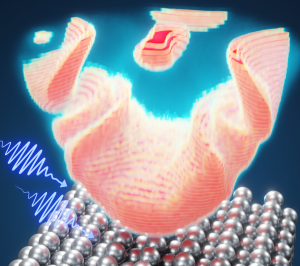This website uses cookies to ensure a better user experience.
To get more information, please read our Cookie Statement.
Multidimensional multiphoton momentum microscopy of the anisotropic Ag(110) surface
Our colleagues Dino Novko and Branko Gumhalter, in collaboration with the scientists from the University of Pittsburgh and Georg-August-Universität Göttingen, have published a paper about novel band-structure features of the anisotropic Ag(110) surface. Their work received “Editors’ Suggestion” from Physical Review B.
Multidimensional multiphoton momentum microscopy of the anisotropic Ag(110) surface
Andi Li, Marcel Reutzel, Zehua Wang, David Schmitt, Marius Keunecke, Wiebke Bennecke, G. S. Matthijs Jansen, Daniel Steil, Sabine Steil, Dino Novko, Branko Gumhalter, Stefan Mathias, and Hrvoje Petek, Physical Review B 105, 075105 (2022).
DOI: 10.1103/PhysRevB.105.075105
Silver mirrors reflect light naturally because no discrete optical transitions modify their spectra. Yet, nonlinear spectroscopy has gleaned the electronic bands and collective responses from its most stable Ag(111) surface. Ag(110) surfaces, whose band structure is hardly explored, form at intersections of two proximate (111) surfaces. This union creates new anisotropic bands whose three-dimensional energy-k⁄⁄ structures are investigated by powerful two-photon photoemission momentum microscopy. The study revealed an unexpected plethora of energy-momentum multiphoton photoemission (mPP) features arising from surface-surface, surface-bulk, and bulk-bulk optical transitions when bands of proximate surfaces collide.
The mPP spectra record the unusual in-surface-plane responses involving resonances with the known Shockley surface states of Ag(110) at the Y point, as well as the strongly anisotropic surface state in a minigap at the Γ point, which mediates the plasmonic photoemission of Ag(110). In addition, image potential surface states and resonances of Ag(110) appear with different contrast that is defined by their parallel momentum-dependent projections onto the projected bands and gaps, the resonance conditions from the lower surface and bulk bands, as well as the order of the nonlinear photoemission process.





